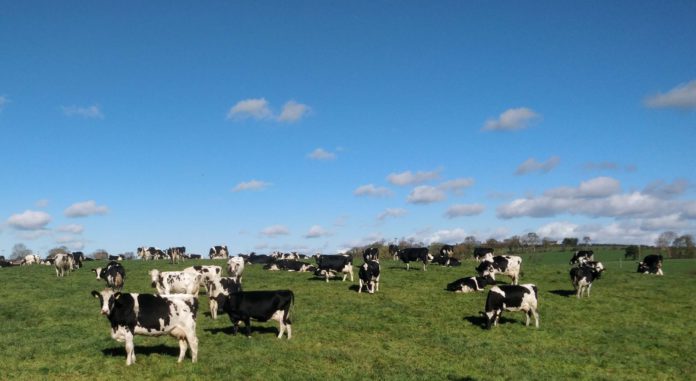Grazing targets for dairy farmers and getting more grass into your herd’s diet
Farmers across Ireland have struggled to get both cows and fertiliser out, due to inclement weather conditions for much of February.
According to Kevin O’Hara, Education Officer, Teagasc Ballinrobe, getting cows out to grass is both beneficial to the cows and beneficial for the grass plant.
It kick starts the grass plant for the year ahead by grazing off any dead material, which has built up over the winter.
Nutritionally spring grazed grass is far superior to grass silage, with digestibility in the region of 80 DMD+. It is typically higher in protein, which allows for greater milk solid production.
Grazing targets for dairy farmers
A spring rotation planner should be completed in order to access where the farm is in terms of grass availability.
Many farms would have completed this in early February with the aim of having 30% grazed by March 1st. As he acknowledged, due to inclement weather this target has not been met on most farms.
Now, he added, is the time to reassess the situation and implement a plan to ensure the farm has enough grass for the second rotation. The planner relies on the principle of grazing a set area each day.
“If the 30% grazed in February target was not achieved, focus on the next target of 60% grazed by March 17th. These targets may be extended out by up to two weeks on heavy farms where grazing would not be achievable in early February.”
He provided the following example:
30ha dairy platform = 9ha grazed by March 1st or 0.32ha/per day, 18ha grazed by March 17th or 0.53ha/per day, with the remainder being grazed out by early April or roughly .8/ha/per day.
“The reason behind these targets is to allow sufficient time for paddocks grazed in February to recover and become available in the rotation in early April.”
“Without these paddocks, grass can become restricted and result in increased costs and possibly reduced milk volume.
“Aim to get as close to these targets as possible as every extra day a cow is at grass, is worth €2.70/day/cow.”
Grazing in wet weather
According to the Teagasc advisor, there are three objectives for cows grazing in wet weather:
- Feed the cow;
- Minimise damage;
- Grazing residuals.
He stressed that the only way for a farmer to know if a paddock is fit for grazing, is to walk the farm.
To get started:
- Firstly, walk the farm and assess ground conditions and grass covers in each paddock;
- Secondly, identify the driest paddocks with lower covers (800-1000KgDM/Ha, 6-8cm of grass). Target to graze these first. Cows will adjust to grazing these covers much quicker than grazing heavy covers after a diet change from silage to fresh grass.
- Thirdly, aim to have multiple access points to minimise damage to gateways.
- Fourthly, get cows out for 2-3 hours on these paddocks after each milking (use strip wires / back-fence, temporary roadways if necessary). Where cows are being let out for a restricted time (on/off-grazing), ensure cows leave the shed or parlour with an empty stomach. This, O’Hara added, means cow will utilise more of their time outside grazing and not causing excess damage by travelling over paddocks.
- Furthermore, when weather improves, graze heavier covers. Cows accustomed to grazing will graze out these covers much better than cows, which are only transiting off silage.
- Lastly, when ground conditions are poor, use back fences to protect areas of paddocks, which have been grazed already.
Fertiliser applications
Nitrogen (N) is essential to grass growth in early spring, 1Kg N applied = 10Kg-15kg grass dry matter growth depending on the grass sward and soil fertility.
To get the best response to N in spring, the soil temperature needs to be 5°C and rising.
At this stage of the spring, it is advised that farmers would have applied 23-46 units of N/acre (0.5-1 bag of UREA/acre) depending on stocking rate and demand for grass. The aim is to have 70 units of N /acre (1.5 bags/UREA/acre) applied by early April.
According to O’Hara, farmers should use slurry to replace chemical N on a portion of the enterprise’s paddocks.
Splash plate slurry will supply six units N/1000gal. Meanwhile, trailing shoe or dribble-bar application will increase this to 9 units N/1000 gallons.
“The efficient use of slurry at this time of year can be a major cost-saver on all dairy farms. Paddocks that are low in P & K should be targeted for slurry application.” O’Hara concluded.
Further reading
For more farming tips and advice, click here.





